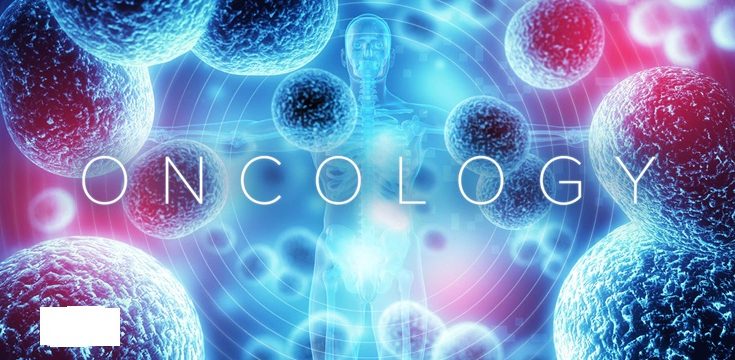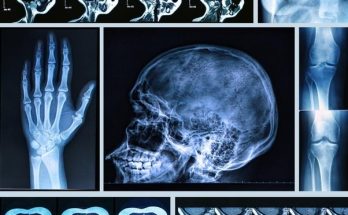Course Description:
This course covers the application of ionizing radiation in the treatment of tumors and other diseases. It explores superficial and deep therapy, heat and immunotherapy, the nature and types of cancer, its staging, causes, and management. The course also examines radiotherapy and chemotherapy equipment, radiation beam measurement, isodose curves, radiation protection, beam modifiers, applicators, simulators, and treatment planning (manual and automatic).
Course Objectives: Upon successful completion of this course, students will be able to:
- Understand the principles of radiation oncology and its applications.
- Describe the nature and types of cancer, its causes, staging, and management strategies.
- Explain the mechanisms of action of radiotherapy, chemotherapy, heat therapy, and immunotherapy in cancer treatment.
- Operate and understand the principles behind radiotherapy equipment, including simulators and treatment planning systems.
- Interpret radiation beam measurements, isodose curves, and understand the use of beam modifiers and applicators.
- Apply radiation protection principles in clinical practice.
- Develop and evaluate radiotherapy treatment plans.
Course Outline:
Module 1: Introduction to Radiation Oncology and Cancer Biology (Weeks 1-2)
- Introduction to radiation oncology: History, principles, and applications.
- The nature of cancer: Cell growth, differentiation, and carcinogenesis.
- Types of cancer: Classification, characteristics, and epidemiology.
- Staging of cancer: TNM system and other staging methods.
- Causes of cancer: Genetic, environmental, and lifestyle factors.
- Cancer management: Multidisciplinary approach, including surgery, radiotherapy, chemotherapy, and immunotherapy.
Module 2: Principles of Radiotherapy (Weeks 3-4)
- Basic physics of radiation: Ionizing radiation, its interaction with matter, and biological effects.
- Radiobiology: Cellular response to radiation, including cell survival curves, fractionation, and the four Rs of radiobiology.
- Superficial and deep therapy: Techniques, applications, and advantages/disadvantages.
- Heat and immunotherapy in cancer treatment: Principles, methods, and clinical applications.
Module 3: Radiotherapy Equipment and Technology (Weeks 5-7)
- Radiotherapy equipment: Linear accelerators, Cobalt-60 units, and other radiation sources.
- Chemotherapy equipment: Infusion pumps, and safe handling procedures.
- Principles of operation and maintenance of radiotherapy and chemotherapy equipment.
- Radiation beam measurement: Dosimetry, ionization chambers, and other measurement devices.
- Isodose curves: Definition, interpretation, and clinical significance.
- Beam modifiers/applicators: Wedges, compensators, bolus, and their uses.
- Simulators: Conventional and CT simulators, their uses in treatment planning.
Module 4: Treatment Planning and Delivery (Weeks 8-10)
- Manual treatment planning: Contouring, dose calculations, and plan evaluation.
- Automatic treatment planning: Computer-aided planning systems, optimization algorithms, and plan comparison.
- Radiation protection: Principles of radiation safety, shielding, and personnel monitoring.
- Treatment delivery techniques: 3D conformal radiotherapy (3D-CRT), intensity-modulated radiotherapy (IMRT), stereotactic radiotherapy, and brachytherapy.
- Image-guided radiotherapy (IGRT) and its role in treatment accuracy.
Module 5: Clinical Applications of Radiotherapy (Weeks 11-13)
- Radiotherapy for specific cancer sites: Breast, lung, prostate, head and neck, gynecological, and others.
- Management of radiation side effects: Acute and late effects, and supportive care.
- Combined modality therapy: Integrating radiotherapy with chemotherapy, surgery, and immunotherapy.
- Palliative radiotherapy: Role in symptom control and quality of life improvement.
Module 6: Emerging Trends in Radiation Oncology (Week 14)
- Particle therapy: Proton and carbon ion therapy.
- Adaptive radiotherapy: Personalized treatment based on tumor and patient changes during therapy.
- Molecular imaging and targeted therapy.
- The future of radiation oncology.
Assessment:
- Assignments (20%)
- Quizzes (10%)
- Midterm Exam (30%)
- Final Exam (40%)
Note: This course breakdown is a tentative outline and may be subject to change at the discretion of the instructor. Specific topics within each module may be adjusted based on time constraints and student progress. Practical laboratory sessions involving simulators and treatment planning systems would ideally be integrated throughout the course.
Introduction to Radiation Oncology: History, Principles, and Applications
1. Introduction
Radiation oncology is a specialized branch of medicine that uses ionizing radiation to treat cancer and other diseases. It is a critical component of modern oncology, working alongside surgery and chemotherapy to provide effective cancer management. This field has evolved significantly, with advancements in imaging, radiation delivery, and treatment planning improving patient outcomes.
2. History of Radiation Oncology
2.1 Early Discoveries
- 1895: Wilhelm Conrad Roentgen discovered X-rays, leading to their rapid medical application.
- 1896: Antoine Henri Becquerel discovered natural radioactivity.
- 1898: Marie and Pierre Curie discovered radium and polonium, pioneering early radiation therapy.
2.2 Development of Therapeutic Radiation
- 1900s: Early X-ray therapy was used for skin diseases and cancers.
- 1920s-1930s: Radium and deep X-ray therapy improved cancer treatment.
- 1950s: Cobalt-60 teletherapy introduced as an external radiation source.
- 1960s-1970s: Linear accelerators (LINACs) replaced cobalt-60 for precise treatment.
- 1990s-Present: Advances in intensity-modulated radiation therapy (IMRT), image-guided radiation therapy (IGRT), and proton therapy improved targeting and reduced side effects.
3. Principles of Radiation Oncology
3.1 Radiation Physics
- Uses ionizing radiation (X-rays, gamma rays, electrons, protons) to damage cancer cells.
- Based on the interaction of radiation with matter, causing ionization and breaking DNA strands.
3.2 Biological Basis
- Direct DNA damage: Radiation directly breaks DNA strands, leading to cell death.
- Indirect DNA damage: Radiation ionizes water molecules, producing free radicals that damage DNA.
- Cell Cycle Sensitivity: Cells in mitosis are more radiosensitive, while those in G0 are more radioresistant.
3.3 Radiation Dose & Fractionation
- Dose: Measured in Gray (Gy), representing energy absorbed per kilogram of tissue.
- Fractionation: Divides the total radiation dose into smaller daily doses to reduce toxicity while maximizing tumor control.
- Conventional fractionation: 1.8–2 Gy per fraction over several weeks.
- Hypofractionation: Larger doses per fraction over fewer sessions.
- Hyperfractionation: Smaller doses given more than once daily.
4. Applications of Radiation Oncology
4.1 Types of Radiation Therapy
- External Beam Radiation Therapy (EBRT):
- Uses linear accelerators to direct high-energy beams at tumors.
- Includes techniques such as:
- 3D Conformal Radiation Therapy (3D-CRT)
- Intensity-Modulated Radiation Therapy (IMRT)
- Stereotactic Body Radiation Therapy (SBRT)
- Image-Guided Radiation Therapy (IGRT)
- Brachytherapy (Internal Radiation Therapy):
- Radioactive sources are implanted near or inside the tumor.
- Used in cervical, prostate, and breast cancer.
- Proton and Heavy Ion Therapy:
- Delivers highly targeted energy with minimal damage to surrounding tissues.
- Used in pediatric tumors, brain tumors, and certain prostate cancers.
4.2 Cancer Types Treated
- Head and neck cancers
- Breast cancer
- Prostate cancer
- Lung cancer
- Brain tumors
- Gastrointestinal cancers
- Lymphomas
4.3 Combination with Other Therapies
- Radiation + Surgery: Preoperative or postoperative radiation enhances surgical outcomes.
- Radiation + Chemotherapy: Enhances tumor radiosensitivity (chemo-radiotherapy).
- Radiation + Immunotherapy: Emerging research explores its synergy with immune checkpoint inhibitors.
5. Conclusion
Radiation oncology is a cornerstone of cancer treatment, with a rich history and evolving technology improving patient care. Understanding its principles, biological effects, and applications allows for optimized therapy with minimal side effects. Advances in precision radiation and emerging therapies continue to shape the future of oncology.



